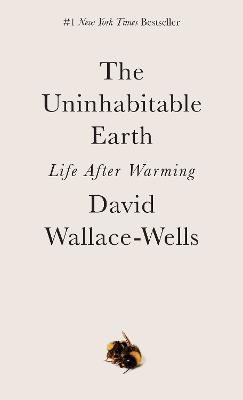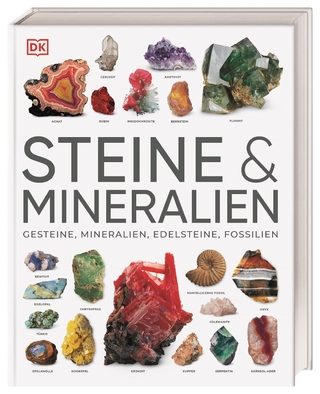
The Uninhabitable Earth
Crown Publishing Group, Division of Random House Inc (Verlag)
978-0-593-23668-0 (ISBN)
NAMED ONE OF THE BEST BOOKS OF THE YEAR BY The New Yorker - The New York Times Book Review - Time - NPR - The Economist - The Paris Review - Toronto Star - GQ - The Times Literary Supplement - The New York Public Library - Kirkus Reviews
It is worse, much worse, than you think. If your anxiety about global warming is dominated by fears of sea-level rise, you are barely scratching the surface of what terrors are possible-food shortages, refugee emergencies, climate wars and economic devastation.
An "epoch-defining book" (The Guardian) and "this generation's Silent Spring" (The Washington Post), The Uninhabitable Earth is both a travelogue of the near future and a meditation on how that future will look to those living through it-the ways that warming promises to transform global politics, the meaning of technology and nature in the modern world, the sustainability of capitalism and the trajectory of human progress.
The Uninhabitable Earth is also an impassioned call to action. For just as the world was brought to the brink of catastrophe within the span of a lifetime, the responsibility to avoid it now belongs to a single generation-today's.
LONGLISTED FOR THE PEN/E.O. WILSON LITERARY SCIENCE WRITING AWARD
"The Uninhabitable Earth is the most terrifying book I have ever read. Its subject is climate change, and its method is scientific, but its mode is Old Testament. The book is a meticulously documented, white-knuckled tour through the cascading catastrophes that will soon engulf our warming planet."-Farhad Manjoo, The New York Times
"Riveting. . . . Some readers will find Mr. Wallace-Wells's outline of possible futures alarmist. He is indeed alarmed. You should be, too."-The Economist
"Potent and evocative. . . . Wallace-Wells has resolved to offer something other than the standard narrative of climate change. . . . He avoids the 'eerily banal language of climatology' in favor of lush, rolling prose."-Jennifer Szalai, The New York Times
"The book has potential to be this generation's Silent Spring."-The Washington Post
"The Uninhabitable Earth, which has become a best seller, taps into the underlying emotion of the day: fear. . . . I encourage people to read this book."-Alan Weisman, The New York Review of Books
David Wallace-Wells is a columnist and deputy editor at New York magazine. He has been a national fellow at the New America Foundation and was previously the deputy editor of The Paris Review. He lives in New York City.
Chapter 1 Cascades It is worse, much worse, than you think. The slowness of climate change is a fairy tale, perhaps as pernicious as the one that says it isn't happening at all, and comes to us bundled with several others in an anthology of comforting delusions: that global warming is an Arctic saga, unfolding remotely; that it is strictly a matter of sea level and coastlines, not an enveloping crisis sparing no place and leaving no life un-deformed; that it is a crisis of the "natural" world, not the human one; that those two are distinct, and that we live today somehow outside or beyond or at the very least defended against nature, not circumscribed and literally overwhelmed by it; that wealth can be a shield against the ravages of warming; that the burning of fossil fuels is the price of continued economic growth; that growth, and the technology it produces, will allow us to engineer our way out of environmental disaster; that there is any analogue to the scale or scope of this threat, in the long span of human history, that might give us confidence in staring it down. None of this is true. But let's begin with the speed of change. The earth has experienced five mass extinctions before the one we are living through now, each so complete a wiping of the fossil record that it functioned as an evolutionary reset, the planet's phylogenetic tree first expanding, then collapsing, at intervals, like a lung: 86 percent of all species dead, 450 million years ago; 70 million years later, another 75 percent; 100 million years later, 96 percent; 50 million years later, 80 percent; 150 million years after that, 75 percent again. Unless you are a teenager, you probably read in your high school textbooks that these extinctions were the result of asteroids. In fact, all but the one that killed the dinosaurs involved climate change produced by greenhouse gas. The most notorious was 252 million years ago; it began when carbon warmed the planet by five degrees Celsius, accelerated when that warming triggered the release of methane, another greenhouse gas, and ended with all but a sliver of life on Earth dead. We are currently adding carbon to the atmosphere at a considerably faster rate; by most estimates, at least ten times faster. The rate is one hundred times faster than at any point in human history before the beginning of industrialization. And there is already, right now, fully a third more carbon in the atmosphere than at any point in the last 800,000 years-perhaps in as long as 15 million years. There were no humans then. The oceans were more than a hundred feet higher. Many perceive global warming as a sort of moral and economic debt, accumulated since the beginning of the Industrial Revolution and now come due after several centuries. In fact, more than half of the carbon exhaled into the atmosphere by the burning of fossil fuels has been emitted in just the past three decades. Which means we have done as much damage to the fate of the planet and its ability to sustain human life and civilization since Al Gore published his first book on climate than in all the centuries-all the millennia-that came before. The United Nations established its climate change framework in 1992, building a political consensus out of a scientific consensus and advertising it unmistakably to the world; which means we have now done as much damage to the environment knowingly than we ever managed in ignorance. Global warming may seem like a distended morality tale playing out over several centuries and inflicting a kind of Old Testament retribution on the great-great-grandchildren of those responsible, since it was carbon burning in eighteenth-century England that lit the fuse of everything that has followed. But that is a fable about historical villainy that acquits those of us alive today-and unfairly. The majority of the burning has come since the premiere of Seinfeld. Since the end of World War II, the figure is abo
| Erscheinungsdatum | 06.03.2020 |
|---|---|
| Verlagsort | New York |
| Sprache | englisch |
| Maße | 105 x 175 mm |
| Gewicht | 261 g |
| Themenwelt | Sachbuch/Ratgeber ► Natur / Technik ► Natur / Ökologie |
| Sachbuch/Ratgeber ► Natur / Technik ► Naturwissenschaft | |
| Naturwissenschaften ► Biologie ► Ökologie / Naturschutz | |
| Schlagworte | Anthropology • Biology • Civilization • Climate • climate change • climate change books • conservation • Culture • earth • Earth Day • Environment • Environmental Science • Evolution • Geography • Geology • geology gifts • Geopolitics • global warming • Government • History of Science • history teacher gifts • math gifts • math teacher gifts • Nature • nature books • nature gifts • Political Science • Politics • Public Policy • Recycling • Science • science books • science gifts • science teacher gifts • Social Science • Sociology • sustainability • teacher gift ideas • wildlife |
| ISBN-10 | 0-593-23668-8 / 0593236688 |
| ISBN-13 | 978-0-593-23668-0 / 9780593236680 |
| Zustand | Neuware |
| Haben Sie eine Frage zum Produkt? |
aus dem Bereich


